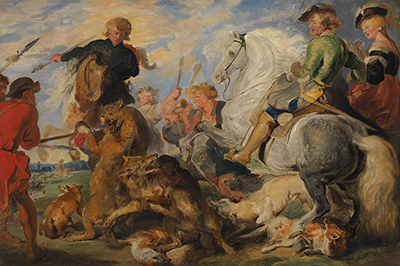Sir Edwin Henry Landseer RA was an English portraitist and sculptor, who was well known for his landscapes of animals' chiefly horses, stags and others. On the other hand, his finest branded works are the lion effigies.
He was a wunderkind whose artistic aptitudes were renowned promptly. He acquired artwork motives under numerous artists, comprising his father, and the antiquity water-colourist Benjamin Robert Haydon, who kept cheering the young Landseer to accomplish divisions in order to entirely understand innate musculature and emaciated structure. Landseer's lifetime was matted with the Royal Conservatory and by age 13, he displayed his artworks there. He was later chosen as a junior, and an Academician. Landseer was a prominent character in British art, and his reproductions can be instituted in Tate Britain and the Wallace Assembly in London. He similarly pools resources with fellow portraitist Frederick Lee.
Landseer's fame in Britain was substantial, and his status as an animal water-colourist was unparalleled. Much of his celebrity was spawned by the pamphlet of etchings of his artwork. His entreaty traversed class borders as facsimiles of his artworks were known among conventional institutions, despite the fact that he was as well popular with the nobility. He imparted in cooperation Victoria and Albert to engrave and made portrayals of Victoria's progenies ordinarily in the syndicate of a dog. Among other amazing portrait made by Landseer, Copy after Rubens's Wolf and Fox Hunt have gain lots of appreciation by many. Sir Landseer was wise enough to apply an amazing painting technique. This marvellous technique was none other than oil on water canvas. Oil canvas is a technique that encompasses water-colour with dyes using a mediocre of drying oil as the folder.
Frequently used drying oils embrace linseed oil, walnut oil, safflower oil and others. The best oil divulges a variety of chattels to the oil tint, such as the quantity of bruising or aeration time. Definite alterations, liable on the oil, are similarly noticeable in the lustre of the paints. A painter might custom more than a few diverse oils in the identical painting reliant on detailed pigments and properties anticipated. The tints themselves besides can develop a precise steadiness liable on the mediocre. The emollient may be simmered with resin-like pine resin to generate a polish award-winning for its figure and gloss. Oil painting methods every so often begin with the sketcher outlining the matter onto the canvas with watery paint. Oil tint is customarily mixed with other solvents to brand the paint diluent. This technique is known to produce the best picture ever.




